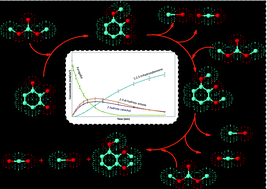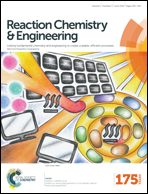Selectivity engineering of O-methylation of hydroxybenzenes with dimethyl carbonate using ionic liquid as catalyst
Abstract
Phenolic ethers are useful commercial entities which have been traditionally produced via polluting routes that could be replaced by benign catalytic processes. In the current work, O-methylation of mono-, di- and tri-hydroxy benzenes (phenolics), namely, phenol, catechol and pyrogallol, has been studied with dimethyl carbonate (DMC) as the etherification agent cum solvent in the presence of a phosphonium ionic liquid as catalyst. The co-products methanol and CO2 could be recycled to make DMC. The catalyst is recycled and thus the overall process is a green process. Ionic liquids possess many useful attributes and can be used as solvents and multi-functional catalysts, and some are amenable to recycling and reuse using clever strategies. Two different types of phosphonium-based ionic liquids were used – one group containing the trihexyl (tetradecyl) cation such as trihexyl (tetradecyl) phosphonium chloride (PC), trihexyl (tetradecyl) phosphonium bromide (PB), trihexyl (tetradecyl) phosphonium decanoate (PD), trihexyl (tetradecyl) phosphonium hexafluoro phosphate (HFP), and another symmetric reference containing the tetrabutyl phosphonium cation (tetrabutyl phosphonium bromide (TBPB)) – and were evaluated in the O-methylation of phenol, catechol and pyrogallol with DMC to the corresponding ethers. Depending on the number of hydroxyl groups on the benzene ring, different mono- and poly-ethers could be produced by using suitable process conditions such as molar ratio, catalyst, temperature and time. All of these intermediate and final ethers have different applications. Trihexyl (tetradecyl) phosphonium bromide (PB) was the best catalyst. Effects of various parameters on the rate of reaction, conversion and yield were studied including speed of agitation, catalyst concentration and reusability, reactant concentration and temperature. The best operating conditions were 200 °C, a 1 : 6 mole ratio of reactant to DMC, and trihexyl (tetradecyl) phosphonium bromide (PB) as catalyst. A reaction mechanism is proposed and discussed to deduce the kinetics.



 Please wait while we load your content...
Please wait while we load your content...